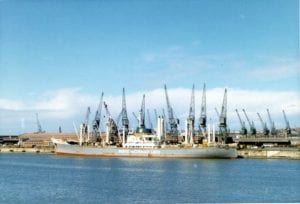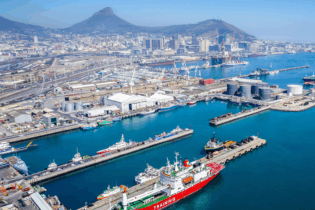Since 2013 there has been steady growth in global crude steel production, which drives Manganese alloys demand.
According to a report released by the International Manganese Institute, in 2014 and 2015, the World Steel Association reached record highs for the demand and supply of Manganese. Having identified this industry growth in 2013, Transnet Port Terminals (TPT) collaborated with a key stakeholder and client in the mining sector in an effort to significantly increase the export of additional volumes of manganese. TPT’s Port Elizabeth terminal is the largest manganese export facility in Africa. Over the past three years, this terminal has introduced a number of innovative handling methods to facilitate the growth of emerging miners and to improve capacities including the successful handling of skiptainer vessels. According to TPT’s PE Terminal Manager, Nelisiwe Mbenekazi, the skiptainer solution has proven a successful method in meeting the rising demand while supporting the South African economy. “When we first undertook the challenge of implementing skiptainers to reach required capacity of increased volume demands in the manganese sector, there was a significant amount of training required for our staff as this was the first initiative of its kind in Africa and we wanted to ensure the safety of our people and equipment.Fortunately, Transnet nurtures a culture and mindset in its staff of being open to new and innovative ideas so the transition was a somewhat seamless one.
The skiptainer would not have been a success though without the valuable support and investment made by one of our key clients, Tshipi e’Ntle Manganese Mining. They were brave enough to trial this new method of handling manganese in partnership with TPT and invested in three rotating spreaders and the Dust Suppressing System (DSS). We have come a long way since the teething issues we experienced when implementing this handling method with the first vessel and one of the highlights has been an in-house innovation to control the dust excess that we were experiencing despite the DSS in place,” explained Mbenekazi. Since the loading of the first vessel using the skiptainer method and De Lange’s ingenious invention, TPT have successfully improved their loading turnaround time from vessels staying for 8 days (Dec 2013) to more recently achieving an average of vessels only staying for three days. Mbenekazi was proud to point out that their best vessel turnaround to date has been two days and the number of vessels they service has increased from one a month to three or four.







